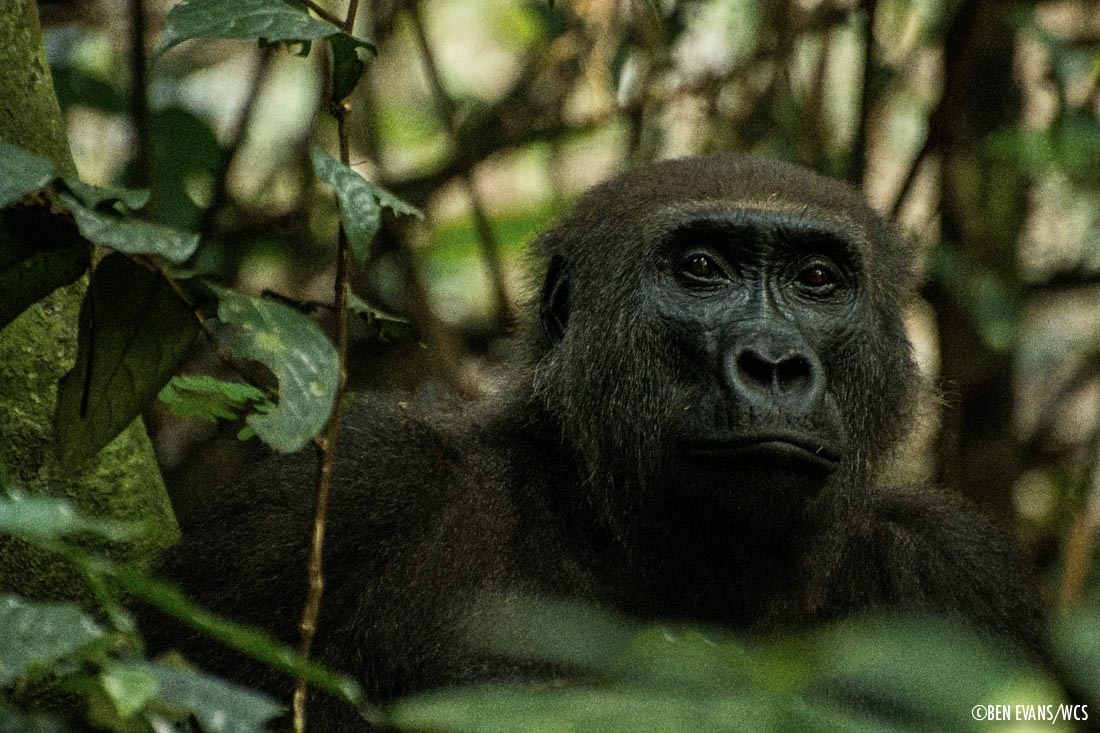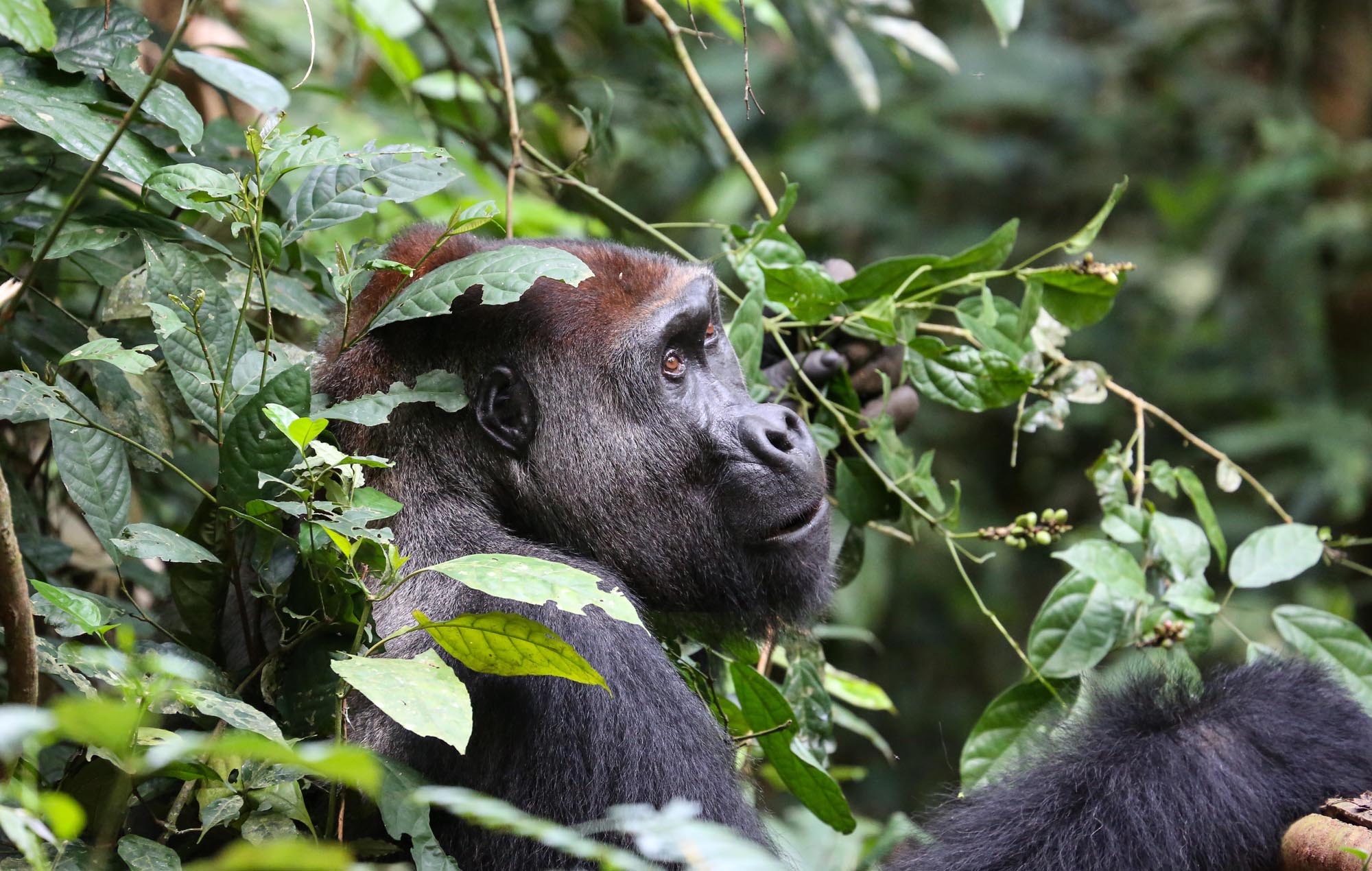Half of Western Lowland Gorillas May Vanish by 2040. Here's How We Can Prevent That. (Op-Ed)

The first time one of us (Fiona Maisels) came face-to-face with a gorilla, in 1988, the animal shouted loudly and repeatedly charged within a few feet of her for half an hour. It felt like an eternity. The research station director, Caroline Tutin, had given sage advice: "If charged, stand, avoid eye contact, stay calm and pretend to eat leaves until the silverback (mature male) is convinced you are a harmless, herbivorous visitor to his home."
Back in camp, Tutin said, "You see? Nothing happened." In fact, it was an unforgettable week at Lopé National Park in Gabon that included a first glimpse of a western lowland gorilla family. A young gorilla was trying to beat her chest like the adults did but had not yet learned the trick; she failed to make the distinctive pok-pok-pok-pok sound, or indeed any sound at all. [See photos of great apes living in the African forest]
Gorillas in trouble
The forest home of this gorilla and his family is one of the remaining great-ape strongholds — part of the huge Western Equatorial Africa region. All western lowland gorillas (Gorilla gorilla gorilla) and central chimpanzees (Pan troglodytes troglodytes) live in this vast forest west of the Congo River, which covers around 290,000 square miles (751,000 square kilometers) — an area larger than France — and spans three entire countries (Gabon, Republic of Congo and Equatorial Guinea) and parts of three others (Cameroon, Central African Republic and Angola).
With 51 co-authors, we have just published a study on these great apes in the journal Science Advances. We brought together field data from 59 areas, which we surveyed between 2003 and 2013. It took the equivalent of 167 person-years to walk 5,400 miles (or 8,700 km, the distance from Los Angeles to London) through the forest to collect this information. The results are mixed. The good news is that we found roughly one-third more gorillas and one-tenth more chimpanzees than were previously believed to be there.
We hope that the silverback who charged so impressively and for so long in 1988 was allowed to age gracefully, because the bad news is that gorilla populations are dropping to the tune of 2.7 percent a year. That may not sound like a lot, but it means half the present population could be gone before 2040. Thus, despite their current population size, which we estimate to be over 300,000, these gorillasand other subspecies remain on the IUCN Critically Endangered list; half the western lowland gorilla population that was around when Maisels met her first gorilla is already gone, according to a 2003 study in the journal Nature.
Why has this happened? The population declines can be attributed largely to poaching, and those decreases are exacerbated by disease and easier access to the forests as new road networks penetrate deep into Western Equatorial Africa's interior — or, to paraphrase science writer Jared Diamond: guns, germs and trees.
Historically, these forests were accessible only on foot or by canoe along one of the rivers. A hunter can walk up to 20 miles (32 km) a day along elephant paths or human trails in the forest. But if he hops on a truck, he can travel 50 miles (80 km) into the woods in a few hours, hunt and come back within days, loaded with the meat of wild animals that he no longer needs to carry on his back. With the opening of the Central African forests to timber extraction, the only remaining bastions of roadless land – where hunters still have to walk – are now protected areas and huge swamp forests. [Image Gallery: 25 Primates in Peril]
Get the world’s most fascinating discoveries delivered straight to your inbox.
What else has changed since 1988? Deadly outbreaks of Ebola virus disease have burned through mammal populations in northeastern Gabon and western Republic of Congo, wiping out more than 90 percent of these great apes across one-sixth of their entire range.
As we look to the future, most worrying is that 80 percent of western lowland gorillas and central chimpanzees live outside the relatively safe havens of protected areas. Rather, they live in large, forested landscapes with formally protected areas (such as national parks and reserves) at their core, and in swamp forests. If land-use planning for economic development does not take into account biodiversity and conservation, industrial agriculture could soon replace vast tracts of the forest home of these great apes.
There has already been some forest loss and degradation, but in the future this will be dwarfed by the clear-cutting of forests for croplands as the range states move away from selective timber exploitation (which leaves the forest still standing) towards industrial agriculture. We have all seen images of oil palms from horizon to horizon on other continents, and oil palm is a looming threat to African apes, according to a 2014 study published in the journal Current Biology.
Going forward
What can be done? Because one of the most serious threats to great apes is poaching (killing of great apes is illegal, worldwide), the first priority is to ensure protected areas are functional, and that includes installing highly effective law enforcement and supporting wildlife protection elsewhere. Continuing support from nongovernmental groups, along with donors such as the U.S. Agency for International Development and the U.S. Fish and Wildlife Service, can play a vital role in protecting great apes.
Second, careful national land-use planning throughout Western Equatorial Africa that preserves high-quality ape habitat in the long term is crucial. We must plan ahead to locate new agricultural development in areas where forest is already degraded and wildlife is already mostly gone. In logging enterprises, we have seen that if the existing laws are obeyed, poaching is prevented. If industrial codes of good environmental practice are followed, great apes, elephants and other large mammals can still survive.
Great apes are our closest nonhuman relatives. Unlike other species such as elephants, which live in a world of smell, sound and infrasound, or bees which can see in the ultraviolet spectrum, great apes see, hear and smell the same way we do. Our social surroundings are also pretty much the same. They nurse their babies, play with them just as we do and use tools. And they grieve the death of relatives and friends.
It is worth fighting for secure and thriving populations of great apes, the heart-stopping charge of a silverback gorilla, the gentle touch of a great-ape mother on her infant and the curiosity of a chimpanzee youngster practicing chest pounding. These great apes may seem far removed from humanity, but if it weren't for a few flips in the switches of evolution, they could be us.
The views expressed are those of the author and do not necessarily reflect the views of the publisher. This version of the article was originally published on Live Science.




